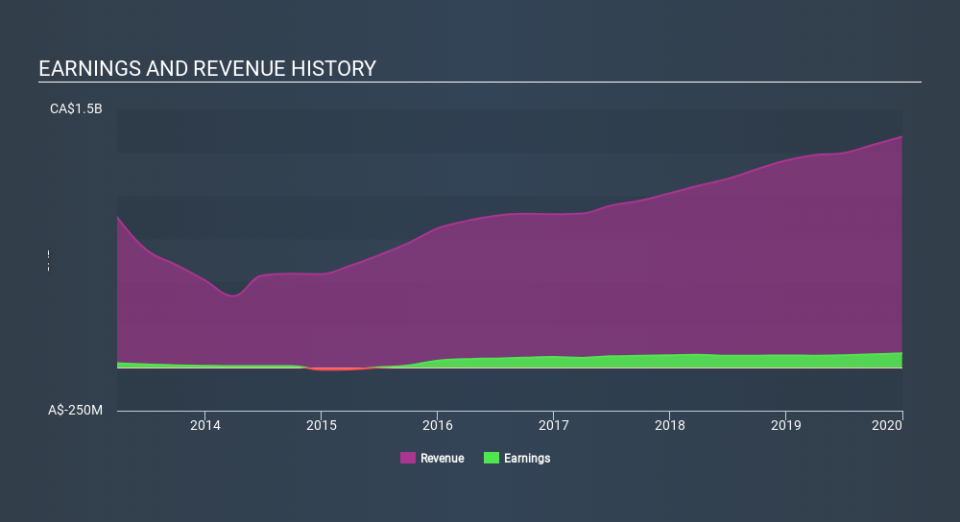Does Exchange Income Corporation's (TSE:EIF) 18% Earnings Growth Make It An Outperformer?

For investors with a long-term horizon, examining earnings trend over time and against industry peers is more insightful than looking at an earnings announcement in one point in time. Investors may find my commentary, albeit very high-level and brief, on Exchange Income Corporation (TSX:EIF) useful as an attempt to give more color around how Exchange Income is currently performing.
View our latest analysis for Exchange Income
Did EIF beat its long-term earnings growth trend and its industry?
EIF's trailing twelve-month earnings (from 31 December 2019) of CA$84m has jumped 18% compared to the previous year.
However, this one-year growth rate has been lower than its average earnings growth rate over the past 5 years of 30%, indicating the rate at which EIF is growing has slowed down. Why could this be happening? Well, let’s take a look at what’s going on with margins and if the whole industry is experiencing the hit as well.
In terms of returns from investment, Exchange Income has fallen short of achieving a 20% return on equity (ROE), recording 11% instead. Furthermore, its return on assets (ROA) of 6.3% is below the CA Airlines industry of 6.4%, indicating Exchange Income's are utilized less efficiently. And finally, its return on capital (ROC), which also accounts for Exchange Income’s debt level, has declined over the past 3 years from 9.4% to 8.0%. This correlates with an increase in debt holding, with debt-to-equity ratio rising from 91% to 141% over the past 5 years.
What does this mean?
While past data is useful, it doesn’t tell the whole story. While Exchange Income has a good historical track record with positive growth and profitability, there's no certainty that this will extrapolate into the future. I suggest you continue to research Exchange Income to get a better picture of the stock by looking at:
Future Outlook: What are well-informed industry analysts predicting for EIF’s future growth? Take a look at our free research report of analyst consensus for EIF’s outlook.
Financial Health: Are EIF’s operations financially sustainable? Balance sheets can be hard to analyze, which is why we’ve done it for you. Check out our financial health checks here.
Other High-Performing Stocks: Are there other stocks that provide better prospects with proven track records? Explore our free list of these great stocks here.
NB: Figures in this article are calculated using data from the trailing twelve months from 31 December 2019. This may not be consistent with full year annual report figures.
If you spot an error that warrants correction, please contact the editor at editorial-team@simplywallst.com. This article by Simply Wall St is general in nature. It does not constitute a recommendation to buy or sell any stock, and does not take account of your objectives, or your financial situation. Simply Wall St has no position in the stocks mentioned.
We aim to bring you long-term focused research analysis driven by fundamental data. Note that our analysis may not factor in the latest price-sensitive company announcements or qualitative material. Thank you for reading.



